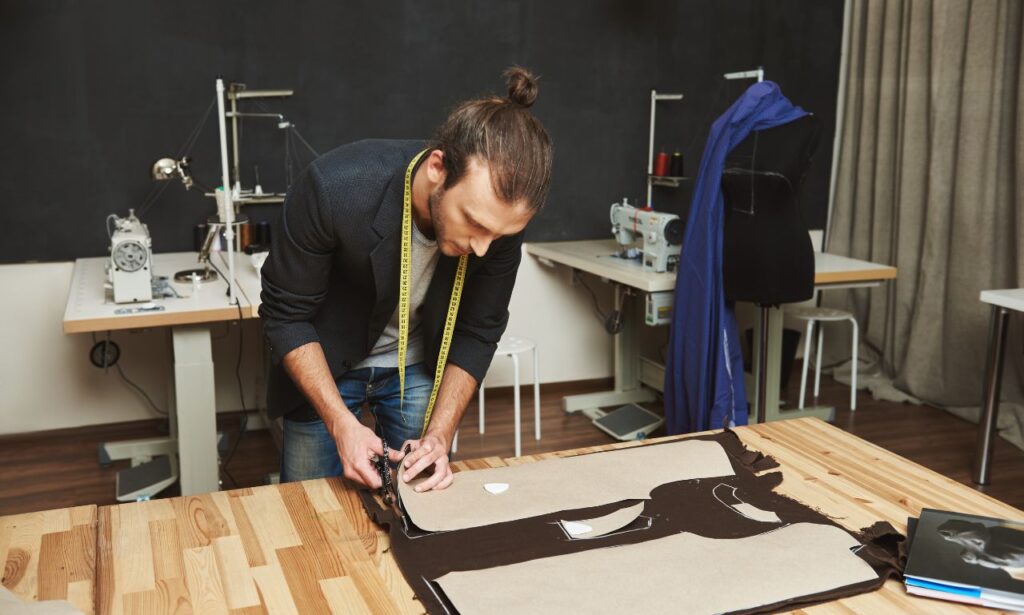The term nahttypen, German for “seam types,” refers to the different methods used to join two materials together—commonly through sewing, welding, or stitching. These seams are foundational in industries ranging from fashion and automotive to aerospace and healthcare. Whether hidden inside your favorite jeans or securing the edges of a surgical incision, the right nahttyp (singular) ensures durability, precision, and performance.
In this 2025 guide, we explore all major nahttypen, their applications, advantages, and how evolving technologies are reshaping the way we think about seams across multiple sectors.
Nahttypen in Textiles: The Foundation of Fabric Construction
In fashion and textile production, nahttypen define how garments fit, flex, and hold together. Different seam types are selected based on fabric type, function, and appearance.
1. Plain Seam (Straight Stitch Seam)
This is the most common type of seam in clothing production.
Use: Everyday apparel, interior textiles, accessories
Features:
-
Simple and fast
-
Minimal fabric bulk
-
Can be reinforced with topstitching
2. French Seam
Used when clean finishes are essential, especially for delicate or sheer fabrics.
Use: Lingerie, silk garments, fine blouses
Features:
-
Conceals raw edges inside the seam
-
Stronger than plain seams
-
Elegant finish for visible interiors
3. Flat-Felled Seam
Commonly found in denim and workwear for maximum strength.
Use: Jeans, uniforms, outdoor gear
Features:
-
High durability
-
No raw edges
-
Double stitching provides extra strength
4. Overlocked Seam (Serged Seam)
Combines seam creation and edge finishing in one step.
Use: Knitwear, stretchy garments
Features:
-
Flexible and durable
-
Prevents fraying
-
Often used in mass production
5. Bound Seam
Raw edges are enclosed with bias binding or tape.
Use: Jackets, bags, heavy-duty textiles
Features:
-
Neat and decorative
-
Extra protection for seam edges
Nahttypen in Technical Fields: Welding and Engineering
In engineering and construction, nahttypen refer to weld seam types used to join metal or thermoplastic parts. The integrity of these seams is critical for safety and functionality.
1. Butt Weld (Butt Seam)
Two edges are joined on the same plane.
Use: Pipe joints, structural beams, tanks
Features:
-
Smooth finish
-
Efficient material usage
-
Requires skilled welding
2. Lap Weld
One metal piece overlaps the other, and the seam is welded along the overlap.
Use: Automotive body parts, sheet metal
Features:
-
Easy to align
-
Increased thickness at joint
-
May trap moisture if not sealed properly
3. Corner Weld
Used to join metal parts at a 90-degree angle.
Use: Frames, boxes, enclosures
Features:
-
Simple to execute
-
Often visible, so aesthetics matter
4. T-Joint Weld
Forms a T shape between two metal pieces.
Use: Frames, brackets, structural assemblies
Features:
-
High load-bearing
-
Requires proper penetration for strength
Nahttypen in Medicine: Surgical Suturing Techniques
In healthcare, particularly in surgery, nahttypen refer to suture techniques used to close wounds, promote healing, and minimize scarring. The correct suture method depends on tissue type, location, and healing requirements.
1. Interrupted Stitch
Each stitch is tied individually.
Use: General surgery, skin closures
Features:
-
Offers high security
-
Easy to adjust or remove
-
Time-consuming
2. Continuous Stitch
One long suture thread is used across the wound.
Use: Internal organs, long incisions
Features:
-
Quick to apply
-
Even distribution of tension
-
If one stitch fails, all can unravel
3. Subcuticular Stitch
Runs beneath the skin surface for aesthetic healing.
Use: Cosmetic surgery, pediatric procedures
Features:
-
Minimal scarring
-
No external stitch marks
-
Absorbable sutures often used
4. Purse-String Stitch
Creates a circular closure by tightening the stitch around an opening.
Use: Closing organ stumps, drain sites
Features:
-
Allows controlled closure
-
Often used in gastrointestinal surgery
Choosing the Right Nahttyp: Factors to Consider
Each industry—and even each project—requires careful consideration of the most suitable seam type. Here are the key decision factors:
-
Material Compatibility: Different fabrics or metals respond differently to stress, heat, or tension.
-
Strength Requirements: High-stress areas need reinforced or layered seams.
-
Flexibility Needs: Stretchy or dynamic applications require seams that move without tearing.
-
Moisture Resistance: In both textiles and welding, seam sealing may be necessary.
-
Appearance: For visible seams, aesthetic finish is critical.
-
Production Method: Machine compatibility, speed, and automation impact seam selection.
Innovations in Nahttypen: What’s New in 2025?
1. Smart Seams
Seams integrated with sensors are being used in smart textiles to measure temperature, movement, and heart rate.
Applications: Wearables, medical diagnostics, sports apparel
2. Ultrasonic Welding in Textiles
Non-thread seams created using high-frequency vibrations offer waterproof, seamless finishes.
Applications: Rainwear, PPE, activewear
3. Self-Healing Surgical Sutures
Biocompatible materials that react to body heat or fluids to close microtears and improve healing.
Applications: Internal surgical procedures, trauma care
4. 3D-Printed Seam Reinforcements
In aerospace and automotive fields, seams are being enhanced with embedded reinforcements during 3D printing processes.
Applications: Custom car panels, drone frames, lightweight equipment
Common Seam Failures and How to Avoid Them
Despite innovation, seam failure remains a significant concern across industries. Understanding failure points helps in better design and execution.
Textile Seam Failures:
-
Occur due to poor thread choice, incorrect tension, or mismatched materials.
-
Avoid by testing prototypes and using quality-controlled production environments.
Weld Failures:
-
Often caused by improper technique or environmental contamination.
-
Avoid with regular inspection, skilled welders, and robotic precision.
Surgical Seam Failures:
-
Caused by improper closure tension, infection, or poor technique.
-
Avoid with training, sterile conditions, and using suitable suture materials.
Industry-Specific Uses of Nahttypen
Fashion and Apparel
-
Focus on comfort, elasticity, and visual appeal
-
Nahttypen like overlock and flat-felled are most popular
Aerospace and Automotive
-
Demand structural strength and lightweight solutions
-
High-grade weld seams with added reinforcements are standard
Healthcare and Surgery
-
Require sterility, tissue compatibility, and healing efficiency
-
Intradermal and absorbable stitches dominate
Sports and Performance Wear
-
Must balance flexibility, durability, and sweat-resistance
-
Ultrasonic or bonded seams are preferred
Sustainability and Seam Design
With rising interest in sustainability, seam design plays a role in reducing waste and increasing garment life. In 2025:
-
Seamless knitting reduces excess thread and fabric
-
Recyclable threads and biodegradable seams are entering the mainstream
-
Modular designs allow garments to be disassembled and repaired rather than discarded
Conclusion
In 2025, nahttypen have become more than just a functional necessity—they are a point of innovation, design strategy, and performance enhancement. From durable overlocked seams in activewear to precision weld seams in aerospace, and advanced surgical sutures, the selection of seam types is critical to product success.






